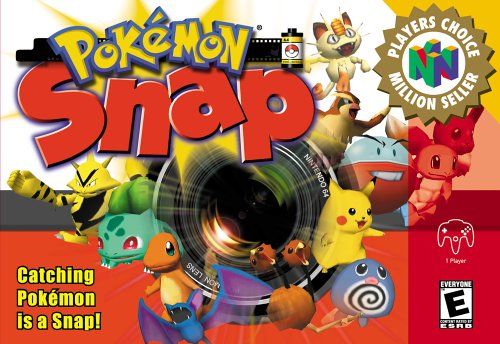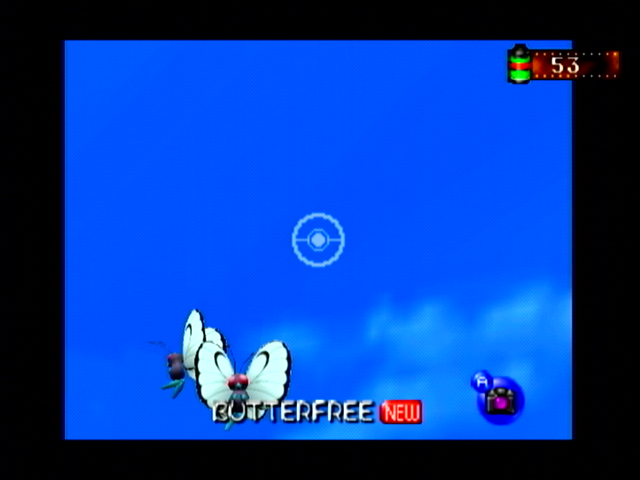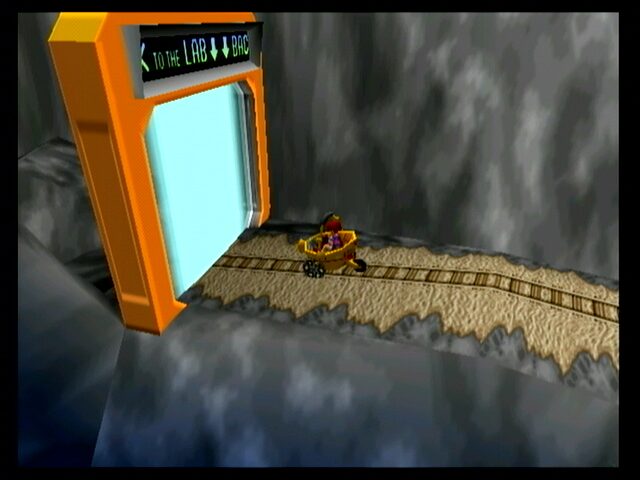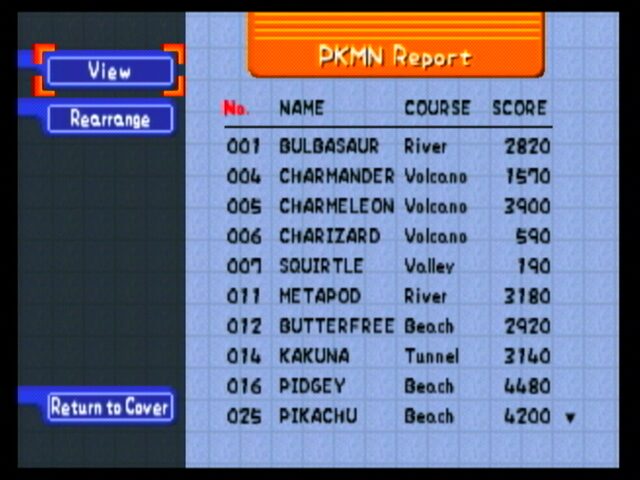Retro Replay Review
Gameplay
Pokémon Snap reimagines the franchise with a fresh twist: instead of battling or trading creatures, you step into the shoes of Todd Snap, an eager Pokémon photographer. The core loop unfolds like a rail shooter, where you glide along a predetermined path in an “on-rails” vehicle. Your sole control is the lens—panning and zooming to capture the perfect shot as Pokémon roam freely in vibrant, interactive environments.
To entice your subjects, Professor Oak equips you with a growing arsenal of research tools. You begin with nothing more than an apple to pique a Pokémon’s curiosity. Earn higher ratings by turning in quality photos, and you’ll soon gain access to more specialized items such as the Pester Ball, which rattles nests or bushes, and the Poké Flute, which can awaken dozing creatures. Timing and strategy are key—you might throw an apple to coax a Charizard into roaring at you, or play the flute to watch sleeping Snorlax stir from its slumber.
Every excursion, or “course,” allows up to 60 photo attempts, but only one image per ride is submitted for grading. Professor Oak evaluates your snapshot based on criteria like framing, Pokémon pose, proximity, and even the number of subjects in frame. Six initial courses take you through biomes such as lush jungles, fiery volcanoes, and sun-dappled beaches. Discovering the hidden signposts throughout these levels unlocks the elusive Rainbow Cloud course, where you might finally capture a glimpse of the mythical Mew. This unlockable path adds depth and replay value, urging players to hunt down that perfect photograph in every setting.
Graphics
Originally released on the Nintendo 64, Pokémon Snap stands out for its bold, colorful environments and characterful creature animations. Though polygon counts are modest by modern standards, the game’s design embraces charm over technicality. Each area features distinct landmarks—dripping lava flows in volcanic caverns, winding vines in tropical jungles, and gently swaying grasslands—that convey a sense of place and wonder.
Pokémon models are animated with simple yet expressive behaviors. Watching Paras scamper across logs or Electrode roll toward you in a fit of curiosity feels surprisingly alive. Environmental interactions—such as splashing in water, flurries of flower petals, or sudden gold dust eruptions—add dynamic flair that encourages multiple passes through familiar courses. The N64’s limited texture resolution is offset by vivid color palettes, ensuring every shot stands out in your in-game album.
On the Wii Virtual Console, the presentation received subtle updates. Jynx’s sprite was recolored from black to purple to align with later series designs and avoid unintended controversy. Additionally, the VC release offers a daily photo-upload feature via the Wii Message Board, emulating the original Pokémon Snap Stations where real prints could be obtained. Although the core visuals remain faithful to the N64 classic, the emulation delivers smoother menus and the satisfaction of sharing snapshots with friends online.
Story
At its heart, Pokémon Snap employs a minimalist narrative: you’re an apprentice photographer on a quest to document Pokémon ecosystems for Professor Oak’s research. There’s no grand villain or epic showdown—just the thrill of exploration and the joy of discovering new creatures in their natural habitats. This straightforward premise allows the gameplay to shine without getting bogged down in complex plot threads.
Each course is framed as a distinct research expedition. Professor Oak briefs you via radio, offering clues on what to look for—perhaps a resting Lapras in the bay or a nest of Pidgey in the forest canopy. His gentle guidance gives each session a sense of purpose, while the hunt for hidden features (raptors in the underbrush, playful Pikachu in secluded groves) injects light puzzle-solving into the photographic process.
The unlockable Rainbow Cloud stage serves as the closest approximation to a final “chapter.” By deciphering the placement of mysterious inscriptions across the six main areas, you earn the chance to photograph Mew, the game’s secret star. Though the story remains intentionally scant, this climactic reveal provides satisfying narrative closure—evidence that careful observation and dedication to your craft can yield extraordinary discoveries.
Overall Experience
Pokémon Snap is a unique entry in the Pokémon lineup that trades combat for creativity. Its relaxed pacing and rewarding scoring system make it a perfect fit for players who enjoy collecting, completing research assignments, or simply soaking in adorable creature moments. The blend of exploration, strategy, and photographic finesse keeps each run fresh, especially as you chase higher ratings and search for hidden Pokémon behaviors.
The roster of 63 original Pokémon strikes a comfortable balance, featuring iconic favorites like Pikachu and Charizard alongside niche picks such as Slowbro and Kangaskhan. While modern titles boast hundreds of species, the compact selection here enhances memorability—after a few sessions, you’ll know exactly where to find that elusive Lapras splash or that playful Jigglypuff songbird.
Thanks to its timeless concept and playful presentation, Pokémon Snap remains a highly recommended experience on the Wii Virtual Console. Whether you’re reliving nostalgia or discovering Todd Snap’s world for the first time, the game offers a stress-free, endlessly replayable excursion into the heart of Pokémon photography. For anyone seeking a charming diversion or a creative twist on the beloved franchise, this game is an absolute must-have.
 Retro Replay Retro Replay gaming reviews, news, emulation, geek stuff and more!
Retro Replay Retro Replay gaming reviews, news, emulation, geek stuff and more!









Reviews
There are no reviews yet.